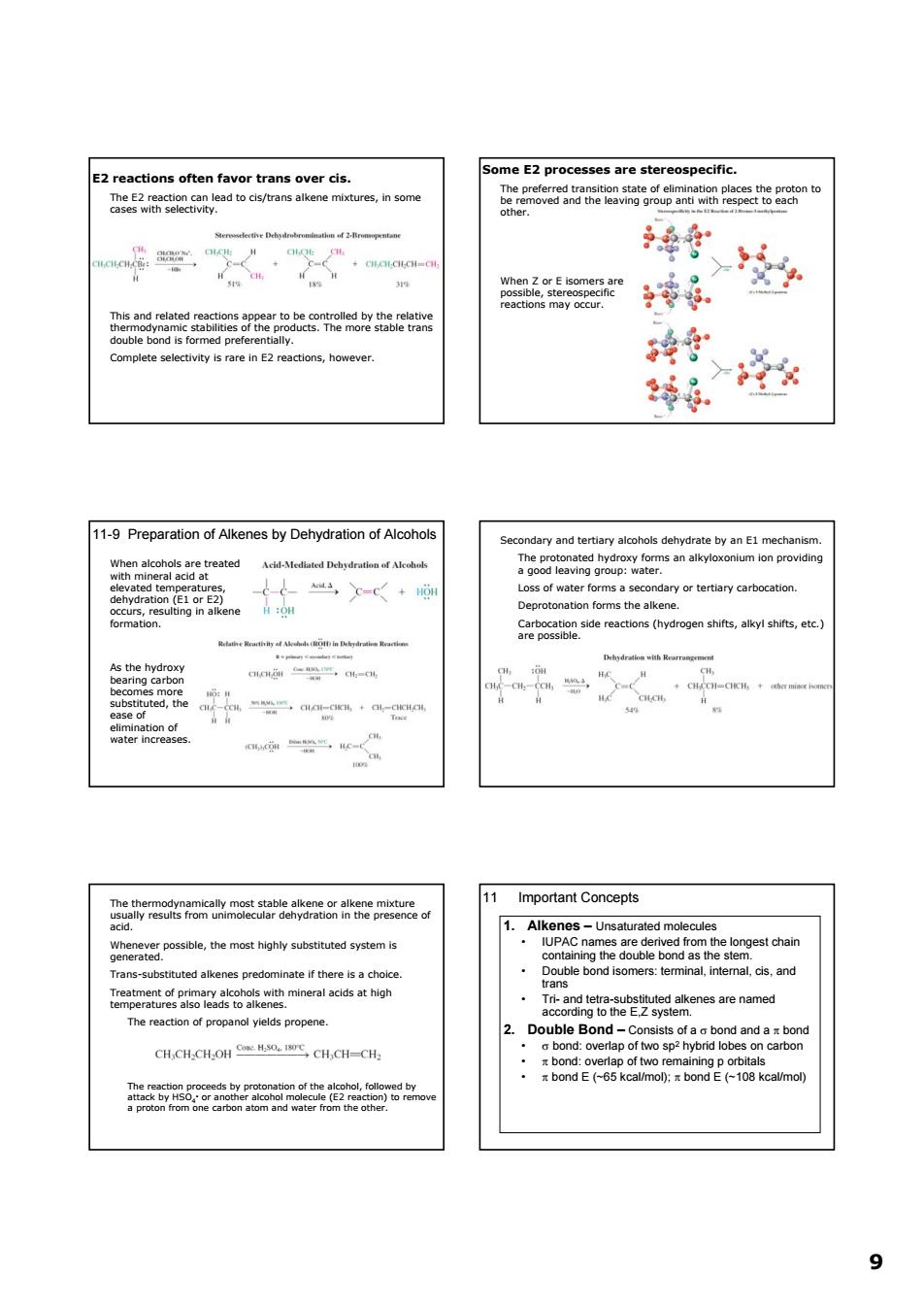正在加载图片...

E2 reactions often favor trans over cis. Some E2 processes are stereospecific. (2-Breampata 学· 单督 6. 晚0 11-9 Preparation of Alkenes by Dehydration of Alcohols y and te Acd-Mediated 0-0 学5 ease of Important Concepts Uns ne,the mothy suuedym 1. es are ved tr le t tuted alkenespr are named The reaction of propanol yields propene. CHCH.CH-OHCH,CH-CH 9 9 E2 reactions often favor trans over cis. The E2 reaction can lead to cis/trans alkene mixtures, in some cases with selectivity. This and related reactions appear to be controlled by the relative thermodynamic stabilities of the products. The more stable trans double bond is formed preferentially. Complete selectivity is rare in E2 reactions, however. Some E2 processes are stereospecific. The preferred transition state of elimination places the proton to be removed and the leaving group anti with respect to each other. When Z or E isomers are possible, stereospecific reactions may occur. 11-9 Preparation of Alkenes by Dehydration of Alcohols When alcohols are treated with mineral acid at elevated temperatures, dehydration (E1 or E2) occurs, resulting in alkene formation. As the hydroxy bearing carbon becomes more substituted, the ease of elimination of water increases. Secondary and tertiary alcohols dehydrate by an E1 mechanism. The protonated hydroxy forms an alkyloxonium ion providing a good leaving group: water. Loss of water forms a secondary or tertiary carbocation. Deprotonation forms the alkene. Carbocation side reactions (hydrogen shifts, alkyl shifts, etc.) are possible. The thermodynamically most stable alkene or alkene mixture usually results from unimolecular dehydration in the presence of acid. Whenever possible, the most highly substituted system is generated. Trans-substituted alkenes predominate if there is a choice. Treatment of primary alcohols with mineral acids at high temperatures also leads to alkenes. The reaction of propanol yields propene. The reaction proceeds by protonation of the alcohol, followed by attack by HSO4 - or another alcohol molecule (E2 reaction) to remove a proton from one carbon atom and water from the other. 11 Important Concepts 1. Alkenes – Unsaturated molecules • IUPAC names are derived from the longest chain containing the double bond as the stem. • Double bond isomers: terminal, internal, cis, and trans • Tri- and tetra-substituted alkenes are named according to the E,Z system. 2. Double Bond – Consists of a σ bond and a π bond • σ bond: overlap of two sp2 hybrid lobes on carbon • π bond: overlap of two remaining p orbitals • π bond E (~65 kcal/mol); π bond E (~108 kcal/mol)